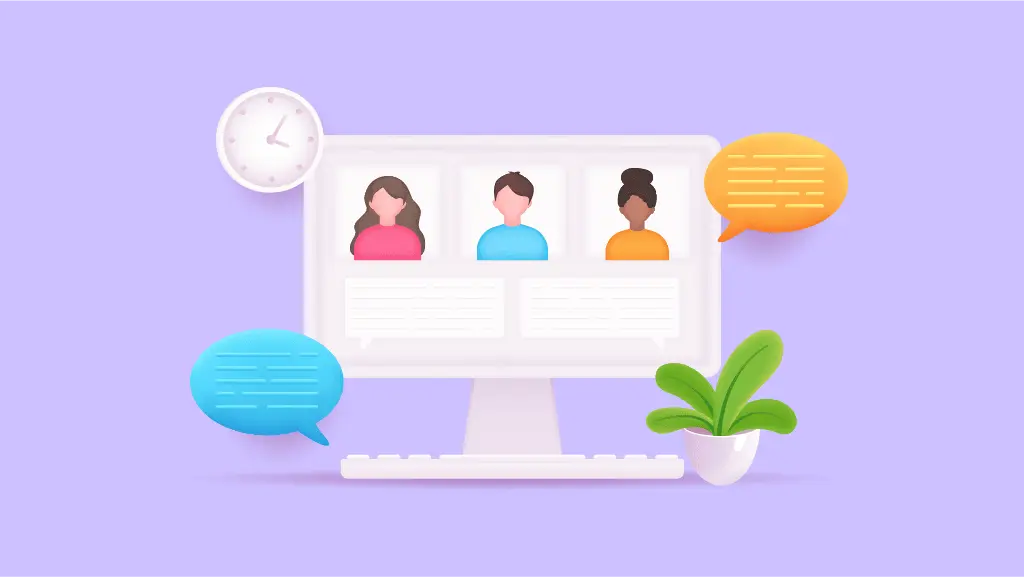
Watch the HR Workflow Solution in action
Preview of the soon to be released
HR Workflow Solution.

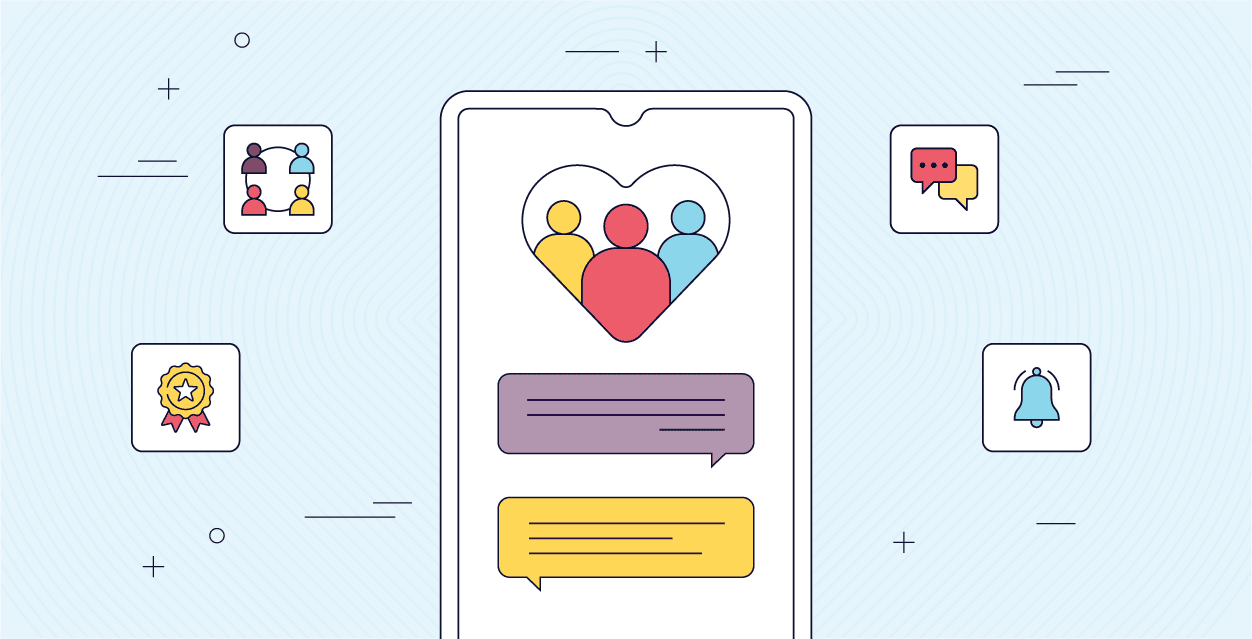
This software helps HR professionals and employees by giving everyone access to better communication, improved workflow, and a more engaging work experience.
HR apps with a mobile emphasis can make it even that much more convenient. So whether you’re on the move or working remotely, mobile HR software provides the flexibility and convenience needed to keep up with the demands of modern business.
From small startups to large enterprises, there’s a suite of human resources tools designed to meet the unique needs of every organization. But how do you find the right one?
We’ve made it easy with this guide to the best HR apps.
Finding the right HR app can be a game-changer for any organization looking to enhance efficiency, engagement, and employee satisfaction. In 2024, the focus is sharper than ever on mobile HR applications that offer not just versatility and user-friendliness but also robust functionality to cater to the dynamic needs of human resources departments. Here, we’ve curated a list of the top 5 mobile HR applications, each excelling in a specific domain of HR management.
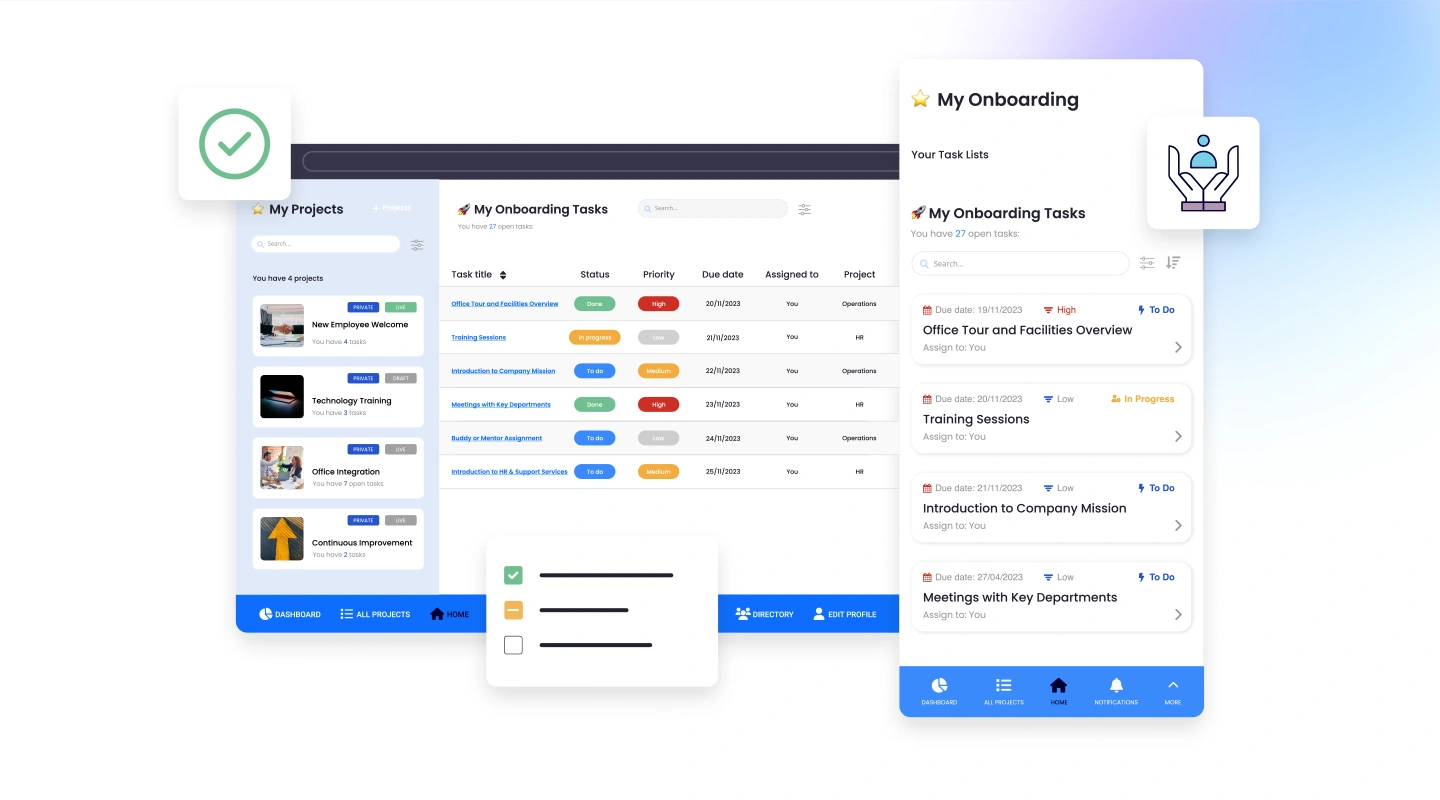
Fliplet is the industry leader in custom HR solutions, offering unparalleled flexibility and creativity in developing mobile HR applications tailored to specific organizational needs. With its no-code platform, HR departments can effortlessly create apps for everything from onboarding and performance management to employee engagement and feedback. This app democratizes app development within HR, enabling companies of any size to implement personalized solutions that reflect their unique culture and operational requirements.

EngagePlus is a mobile solution focused on boosting employee engagement and morale. It offers a wide array of features, such as peer recognition, rewards programs, and real-time feedback channels. With its intuitive design and user-friendly interface, EngagePlus helps create a positive work culture that values and recognizes employee contributions.
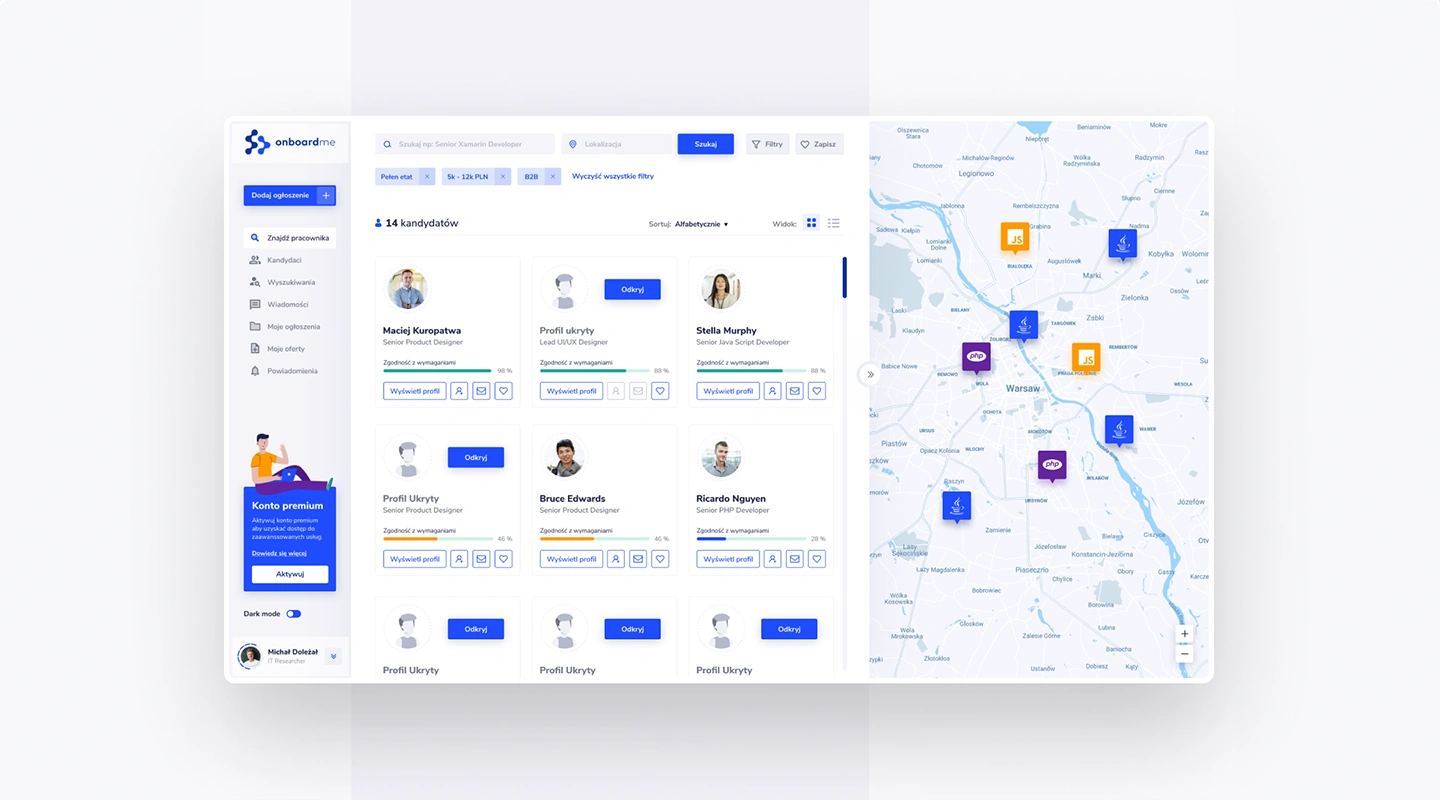
The transition periods for employees, whether joining or leaving, are critical. OnBoardMe offers a streamlined solution for managing these transitions with ease. Its features include digital paperwork, orientation schedules, and a resource library for new hires. For offboarding, it provides exit interview templates and deactivation checklists, ensuring a smooth and organized process.
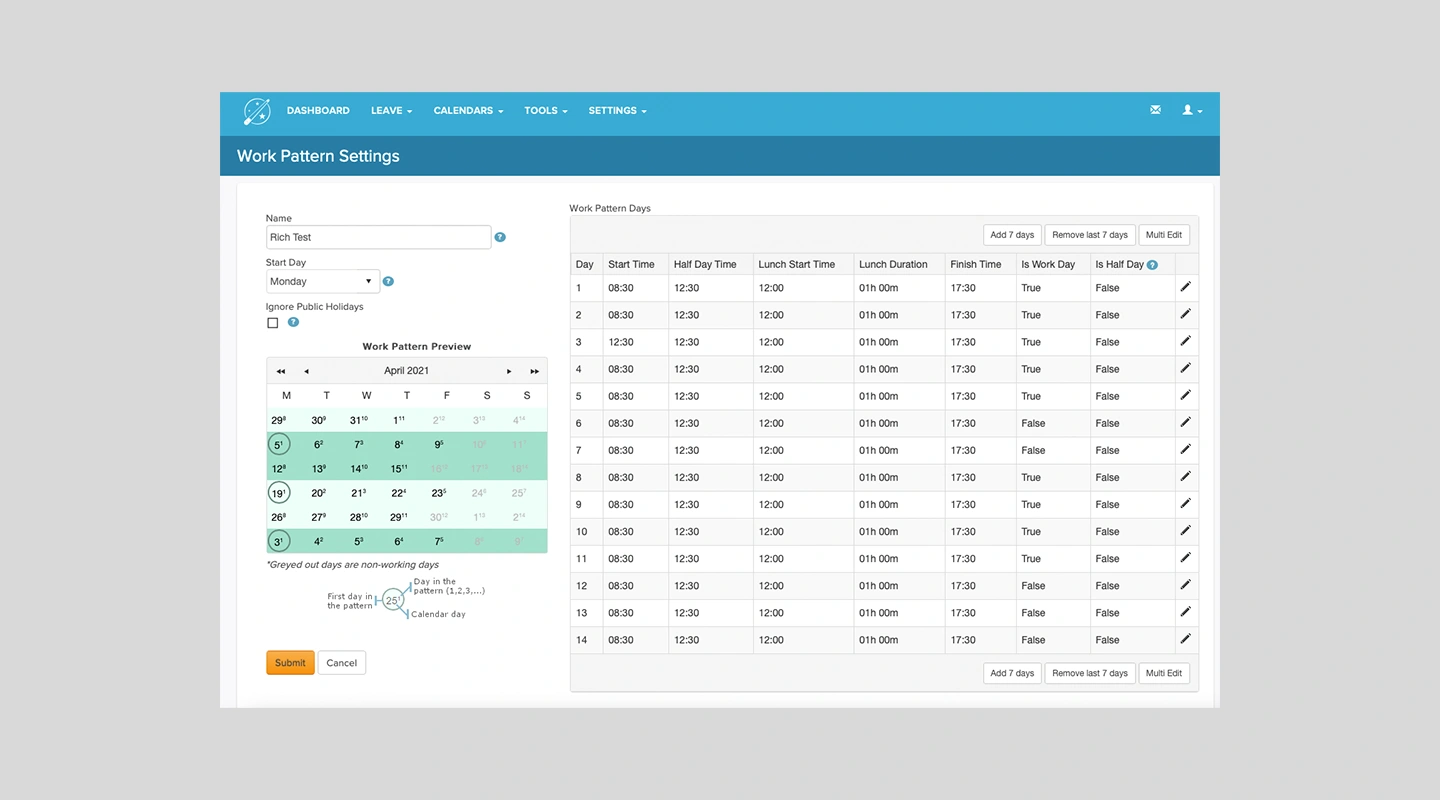
Leave management can be a logistical challenge, but LeaveWizard makes it a breeze. This app specializes in tracking leave requests, approvals, and balances in real time, offering transparency and ease of use for both employees and HR managers. Its calendar integration and customizable rules for different types of leave make it a standout choice for managing absences efficiently.
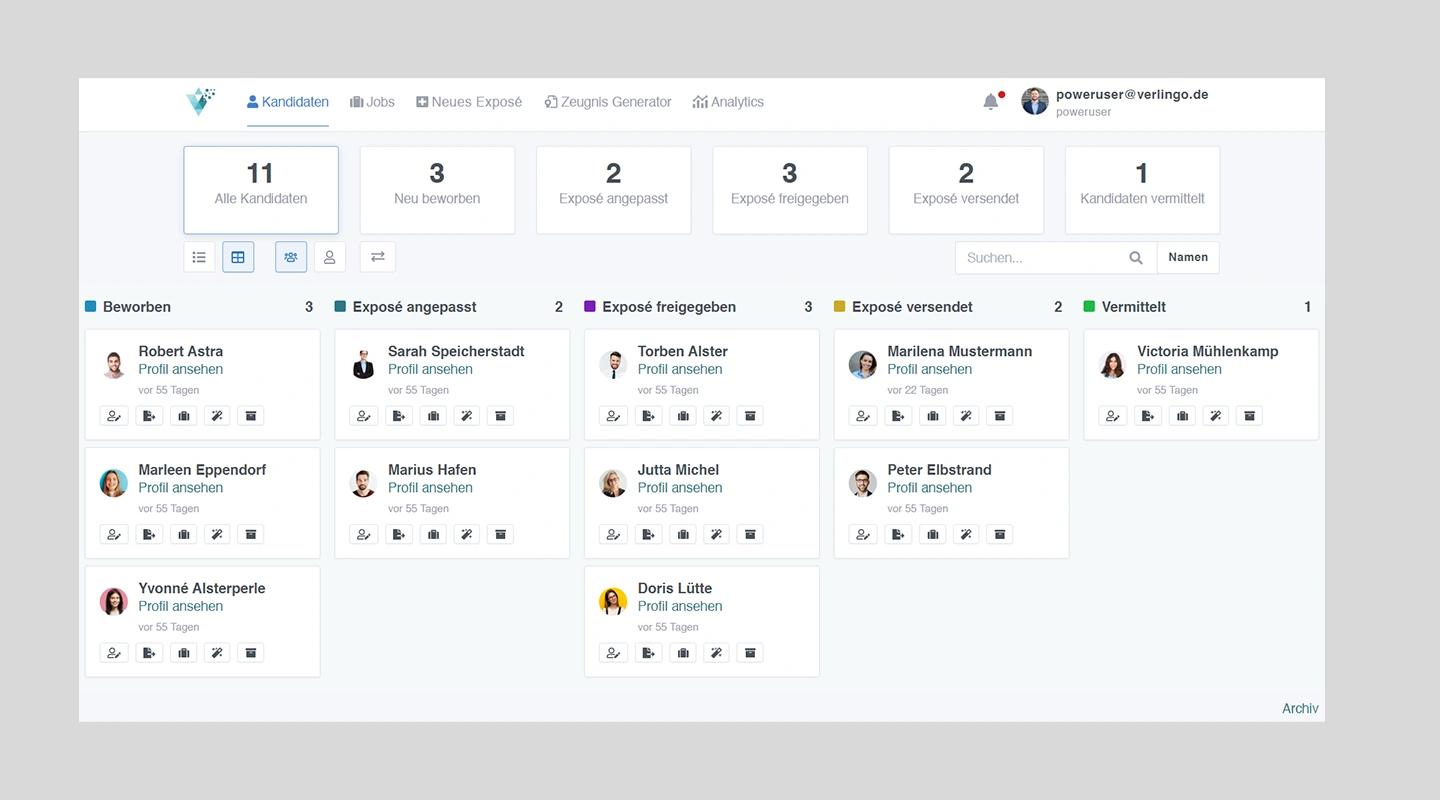
In recruitment, TalentScout is the go-to app for finding and attracting top talent. Its capabilities include job posting distribution, applicant tracking, and communication tools, all designed to enhance the recruitment process. With advanced filtering options and integration with social media platforms, TalentScout streamlines the hiring process, making it faster and more effective.
HR apps, or Human Resources applications, are the modern-day superheroes that rescue HR teams, helping them effortlessly manage their workforce. These apps come in various forms, each with a unique set of features that cater to the diverse needs of HR professionals throughout the employee lifecycle. We believe that HR apps fall under 5 different main categories, which can be listed below with there subcategories.
For more on employee engagement, read our blog.
These apps help HR professionals manage the hiring process by providing tools for organizing employee information, streamlining the hiring request process, and tracking applicants. They are crucial in attracting, evaluating, and managing potential candidates.
These apps facilitate seamless transitions for employees as they join or leave an organization. They help HR teams automate and manage various employee onboarding and off-boarding tasks.
Human Resource Management apps provide essential tools for HR departments to effectively manage various employee-related processes, such as leave management, job changes, and benefits administration. These applications help organizations maintain a well-organized and efficient workforce while ensuring employee satisfaction.
Performance management apps provide HR teams with tools to support employee growth and development. They help organizations set goals, track progress, and evaluate performance fairly and consistently.
Employee engagement apps focus on fostering a positive work environment by providing tools for effective communication, recognition, and feedback. They contribute to increased employee motivation and satisfaction.
With these categories in mind, let’s dive into our list of 15 HR apps that are changing how HR works!
For more on building a custom app, read our blog.
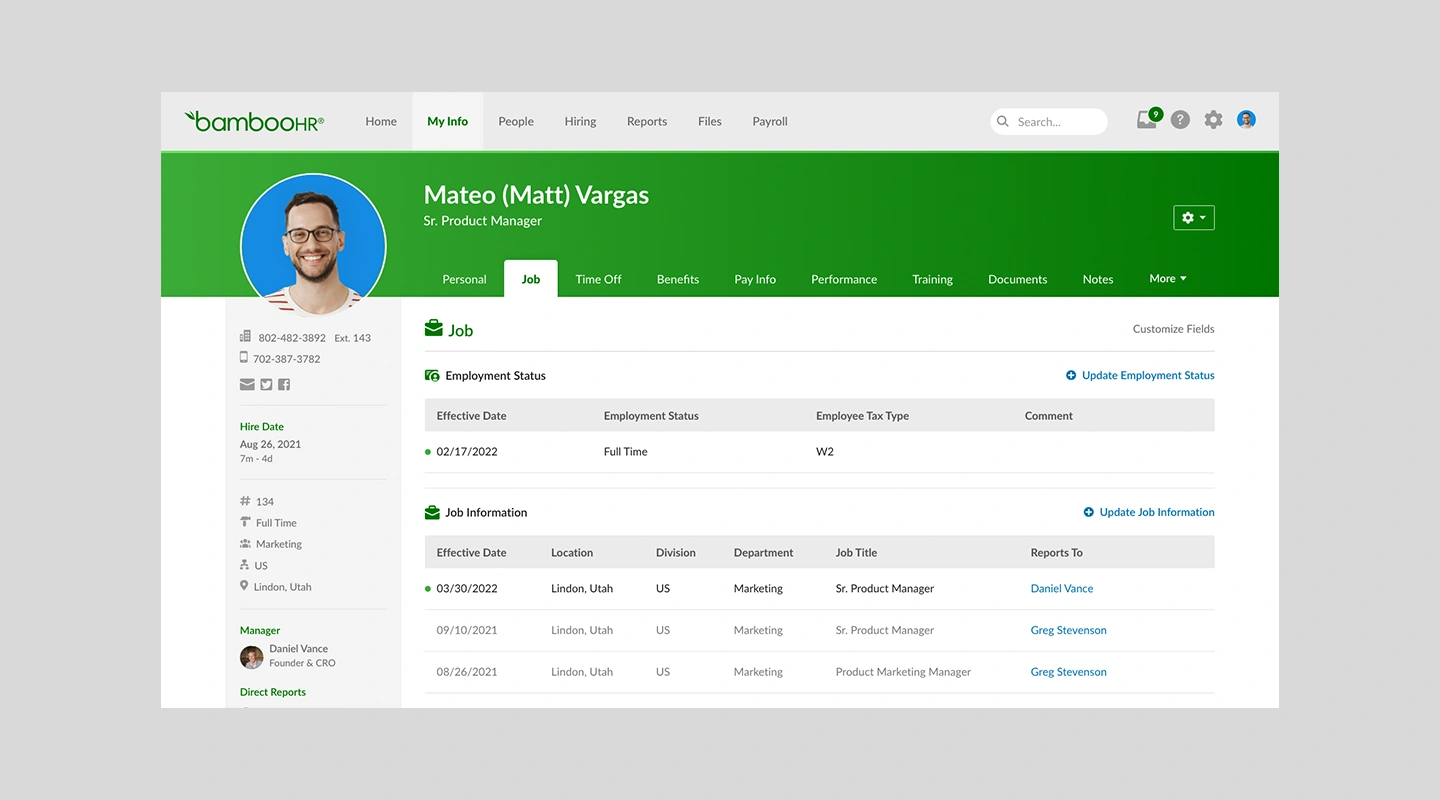
Bamboo HR is best used as a recruitment app.
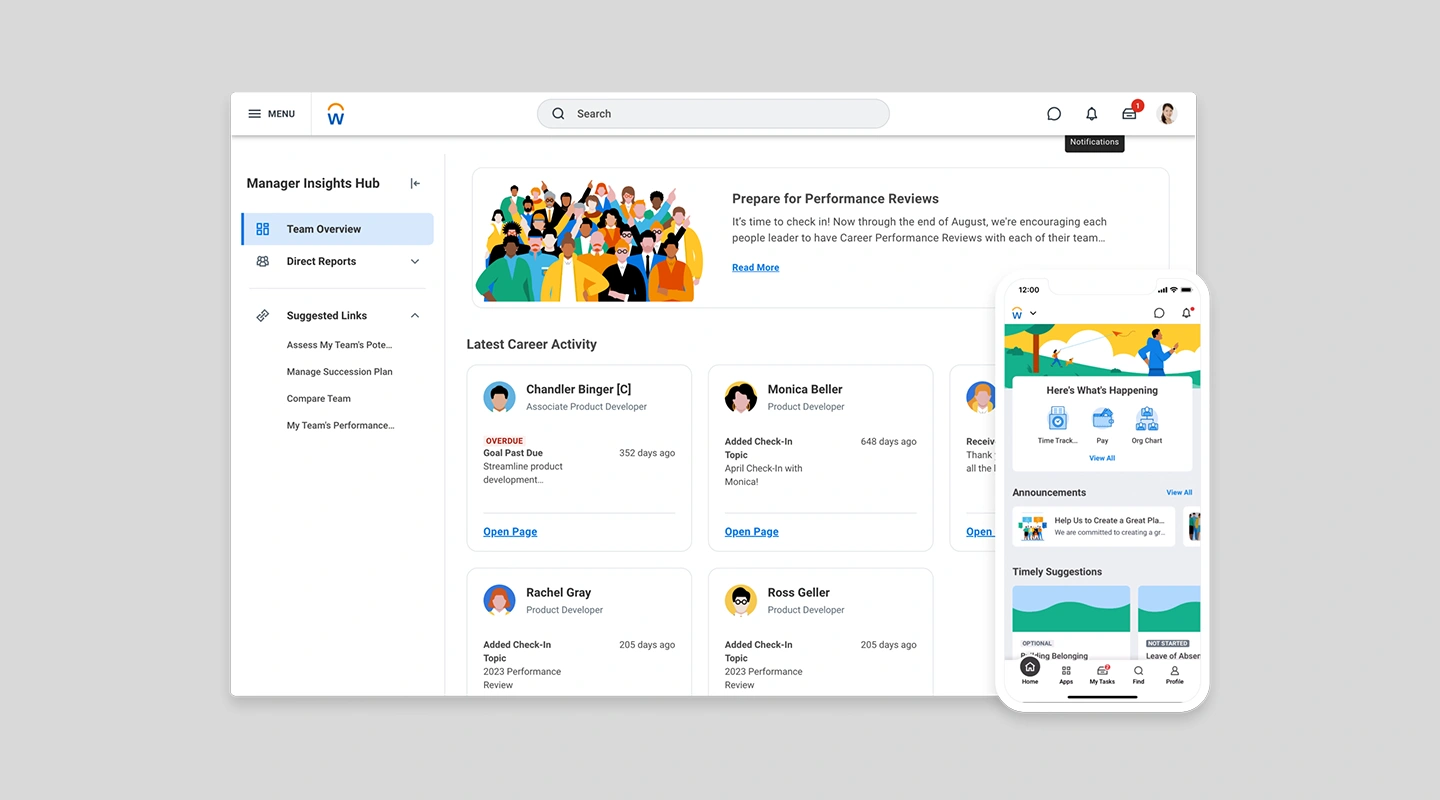
Workday is best used as a recruitment app.
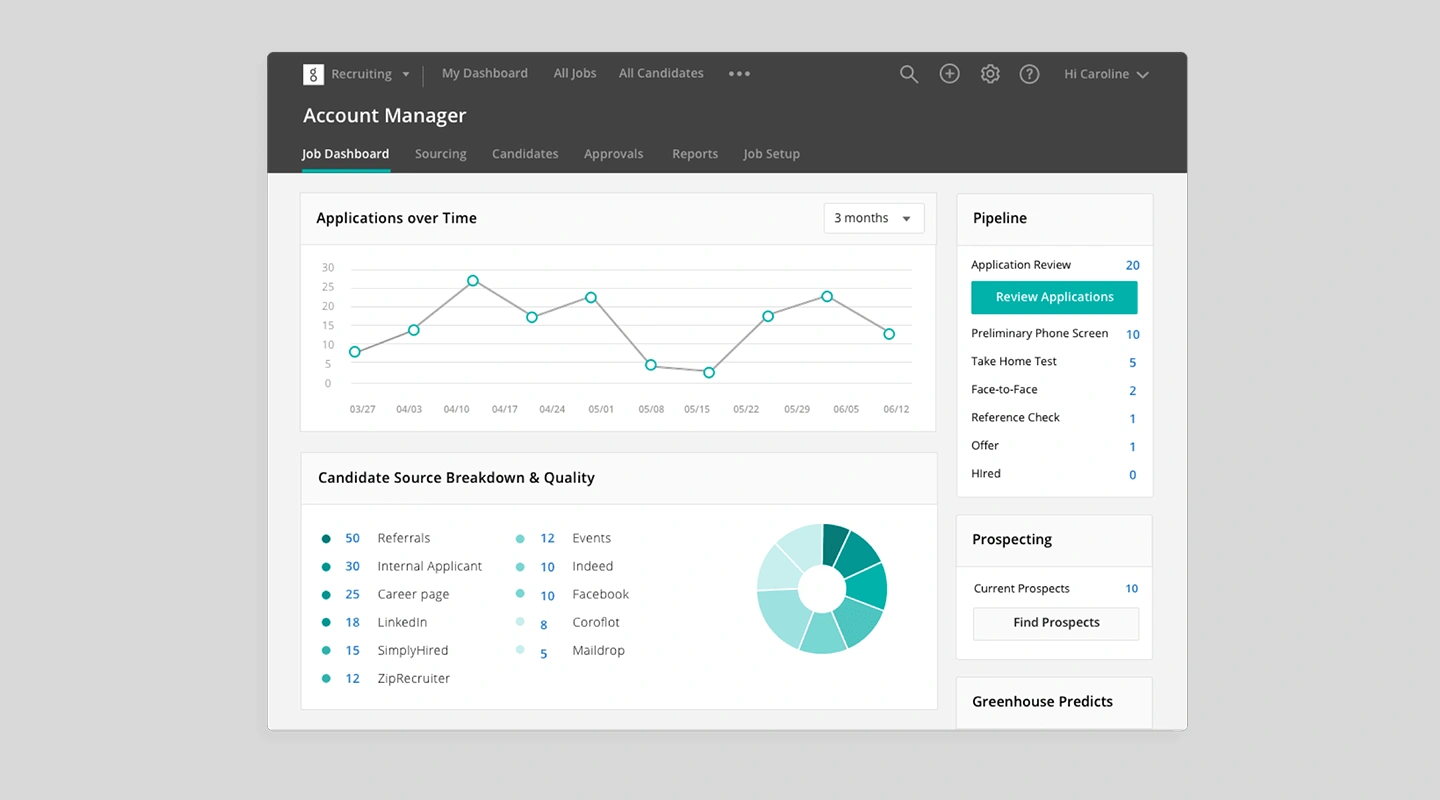
Greenhouse is best used as a recruitment app.
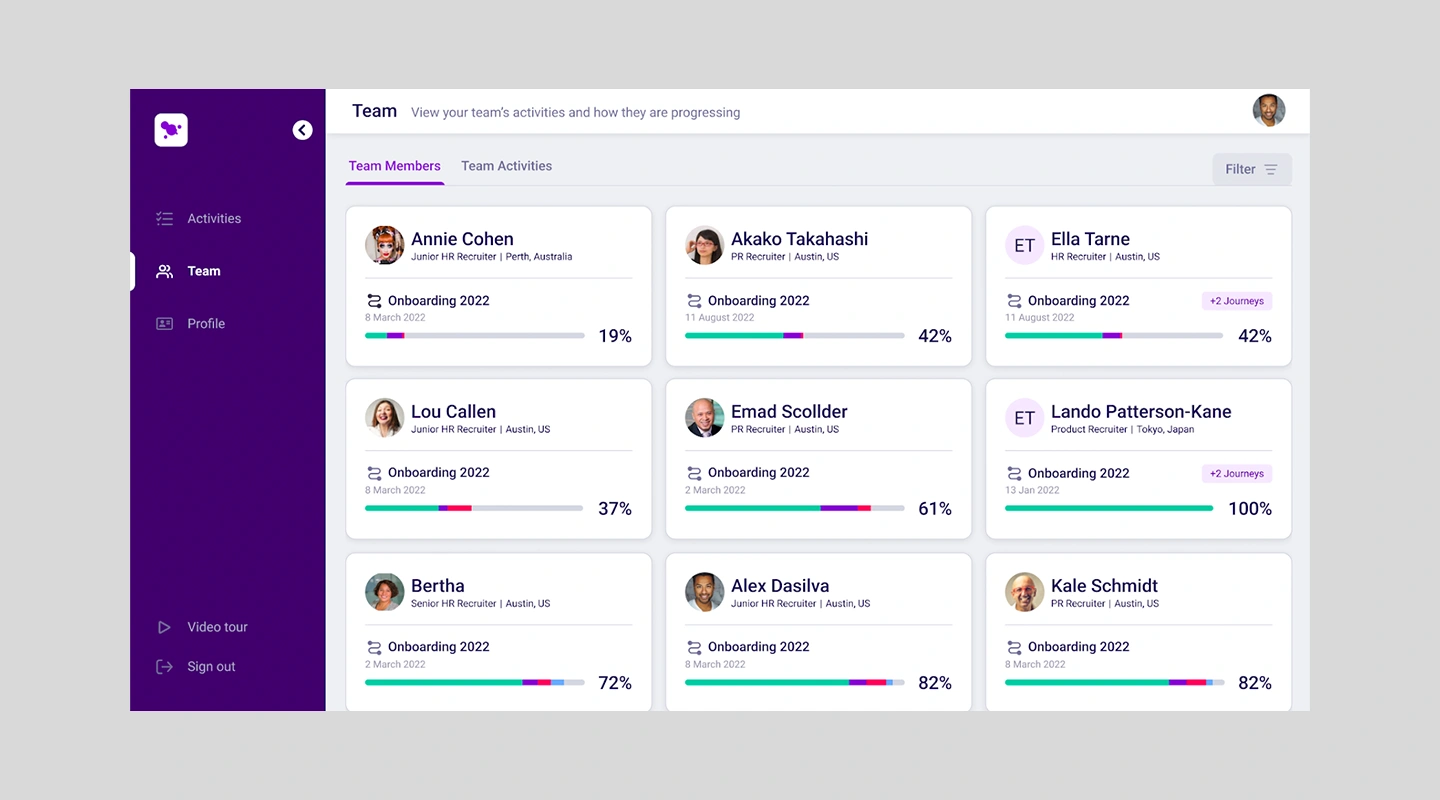
Enboarder is best used as an onboarding or off-boarding app.
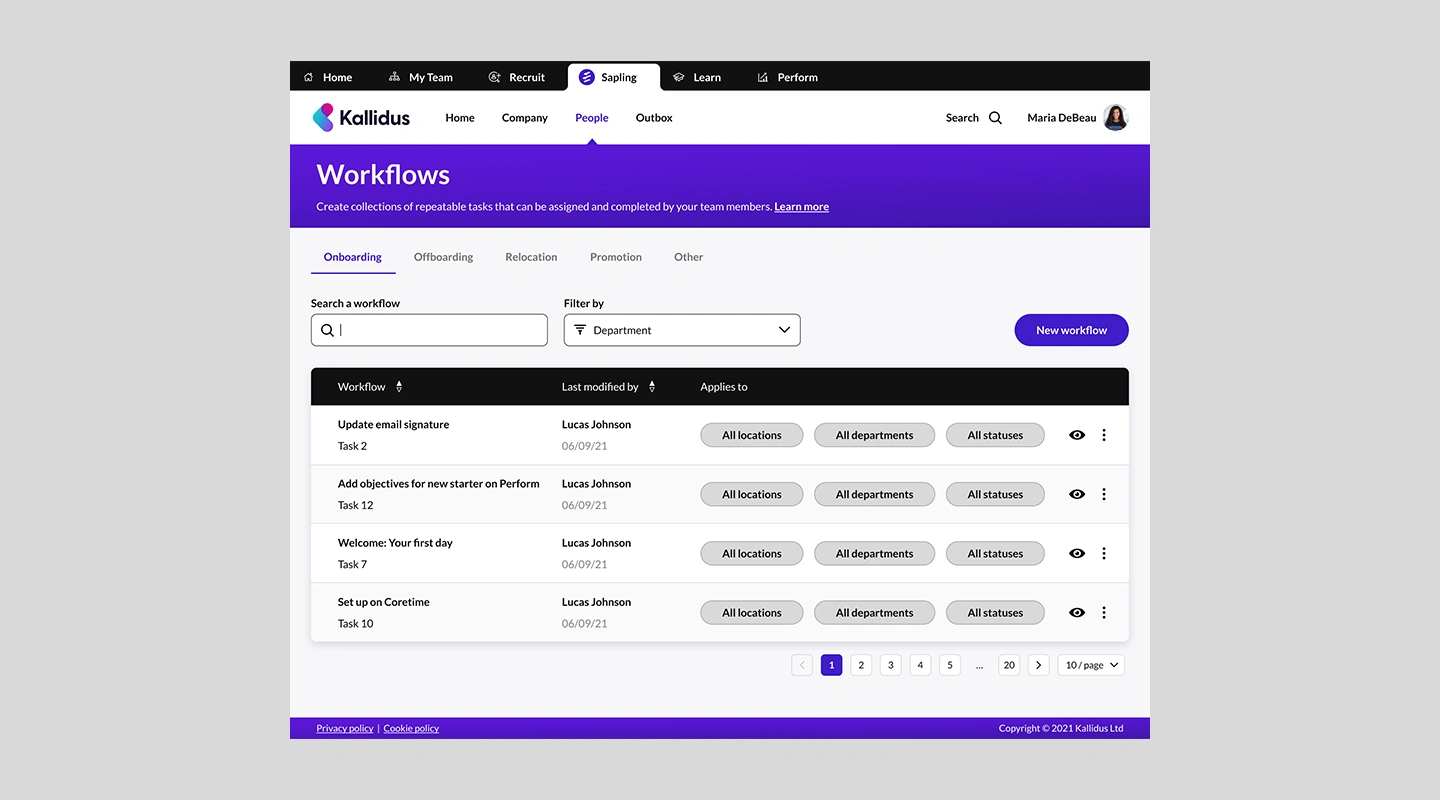
Sapling is best used as an onboarding and off-boarding app.
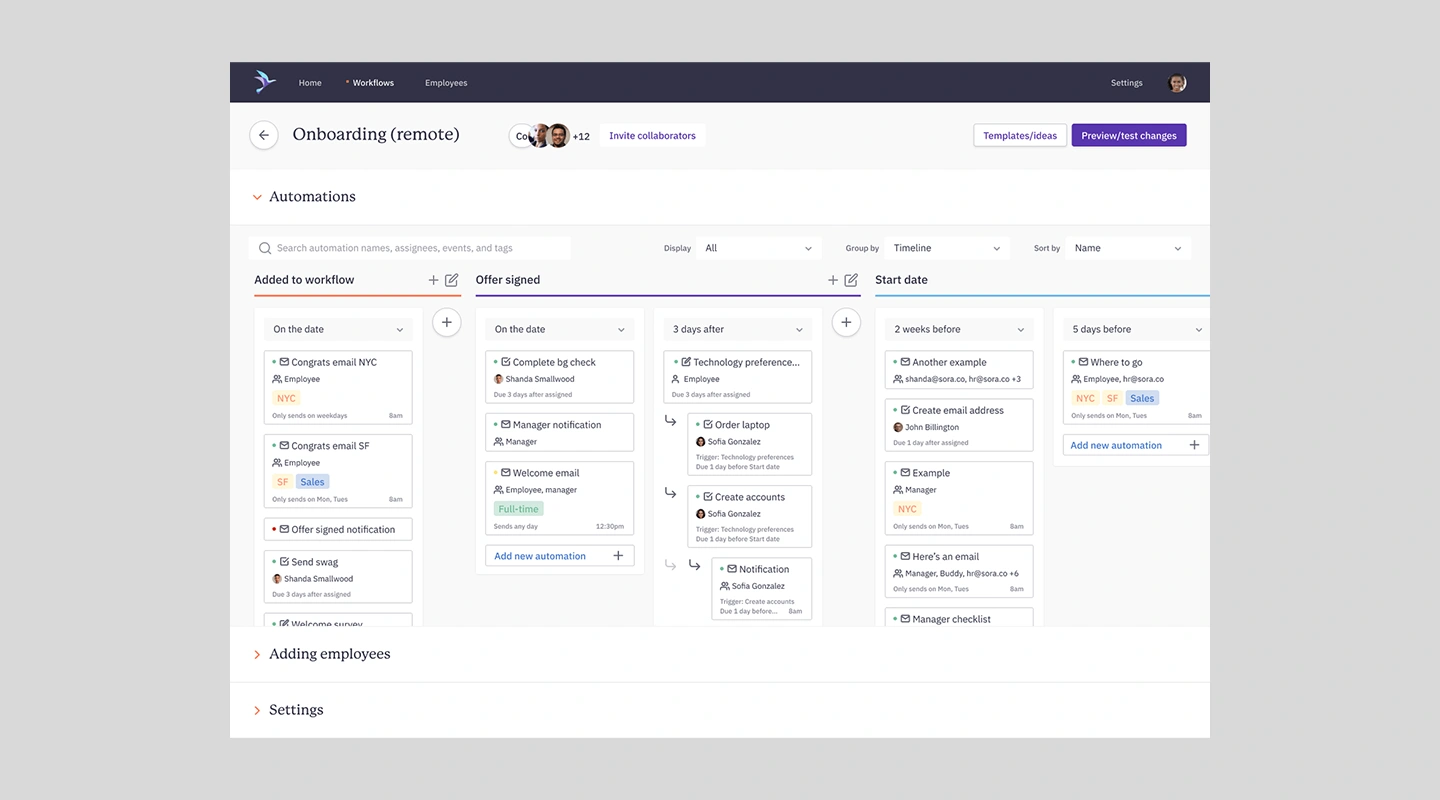
Sora is best used as an on-boarding and off-boarding app.

How Bamboo Hr can be used as a Human Resource Management App:
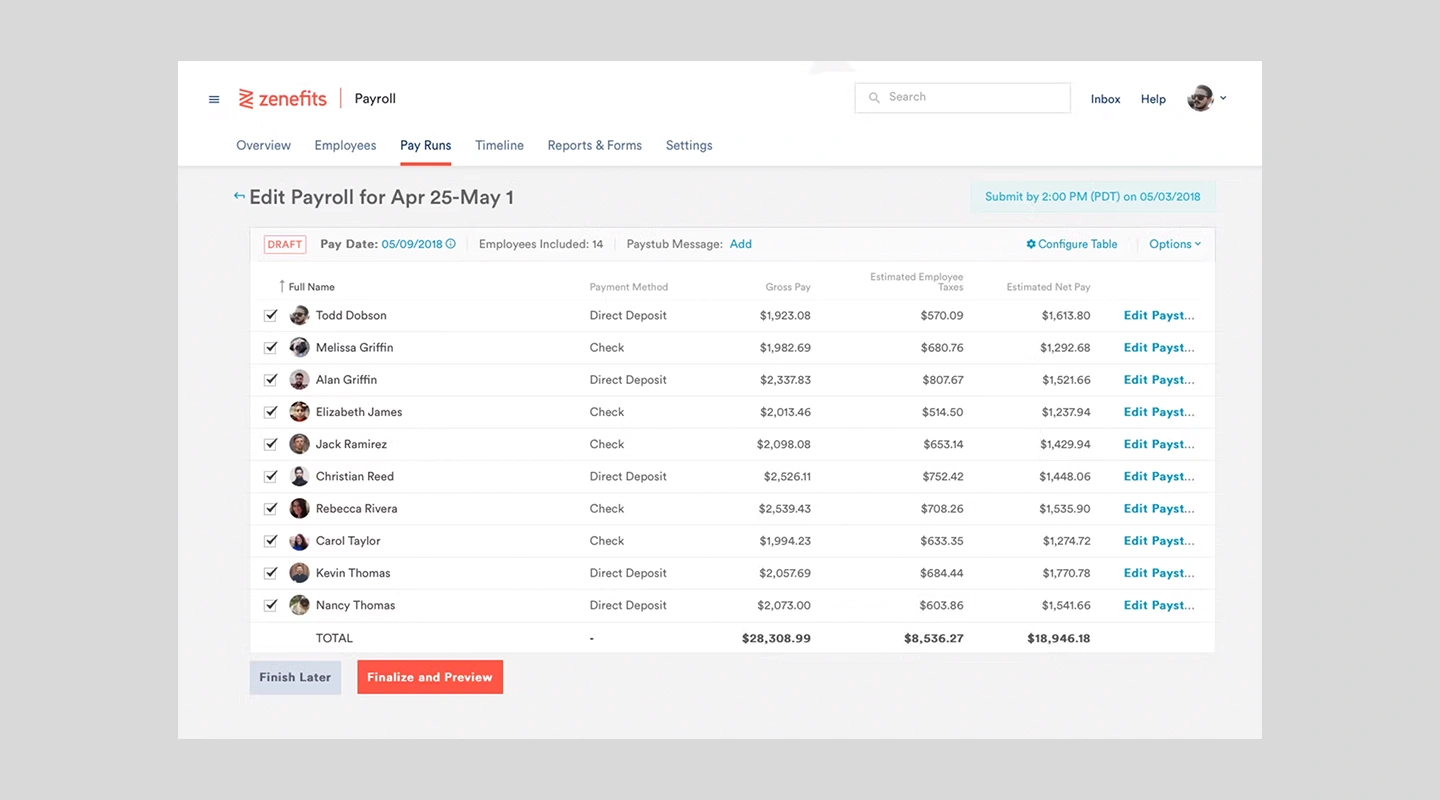
How Zenefits can be used as a Human Resource Management App:
While Workday HCM offers robust features and functionalities for organizations of all sizes, some users may find it challenging to navigate the system and fully leverage its capabilities.

How Workday can be used as a HR Management App:

How 15 Five can be used as a Performance Management App:
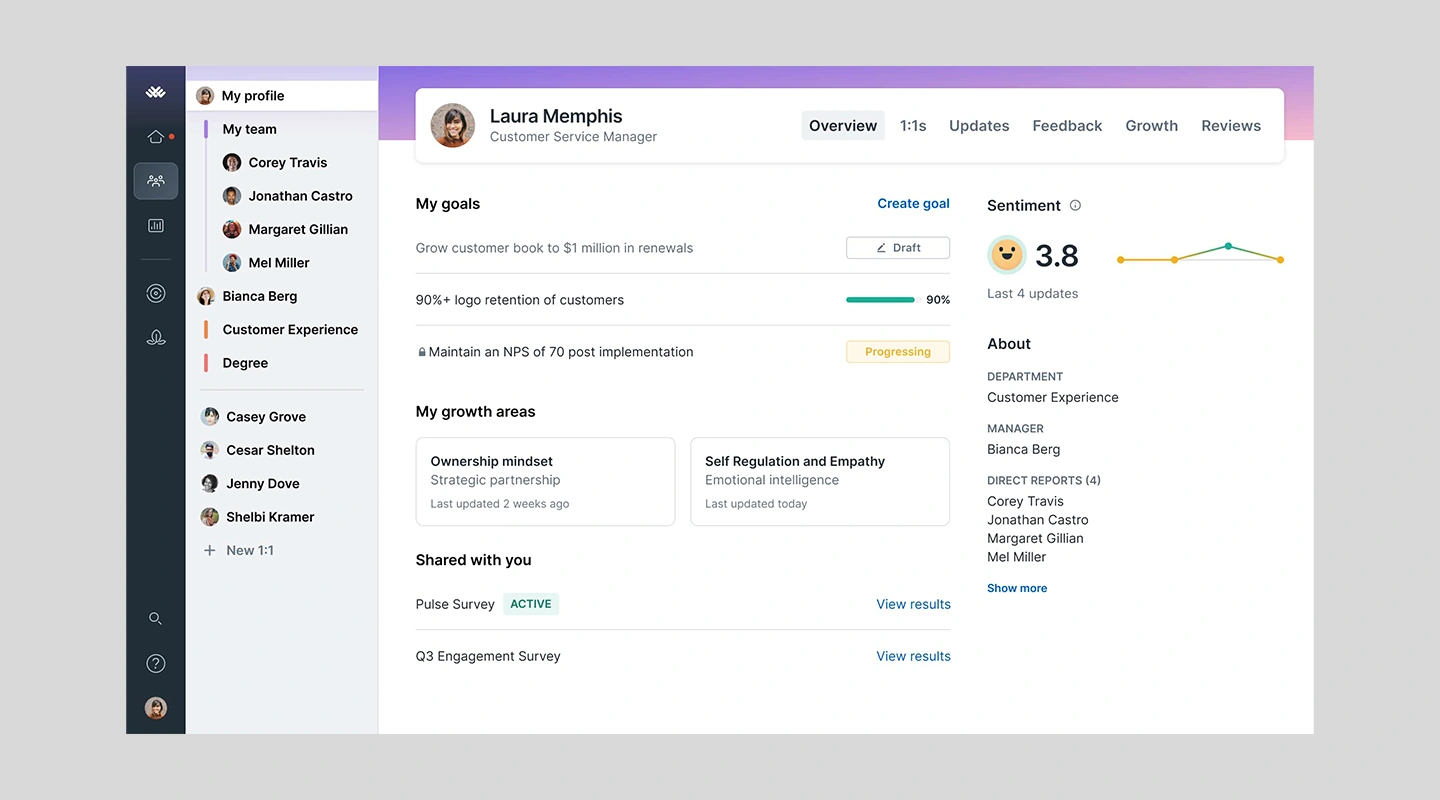
How Lattice can be used as a Performance Management App:
Although Betterworks is designed for businesses of all sizes, some users might find the platform’s features insufficient for their growing or complex HR needs, particularly in larger organizations
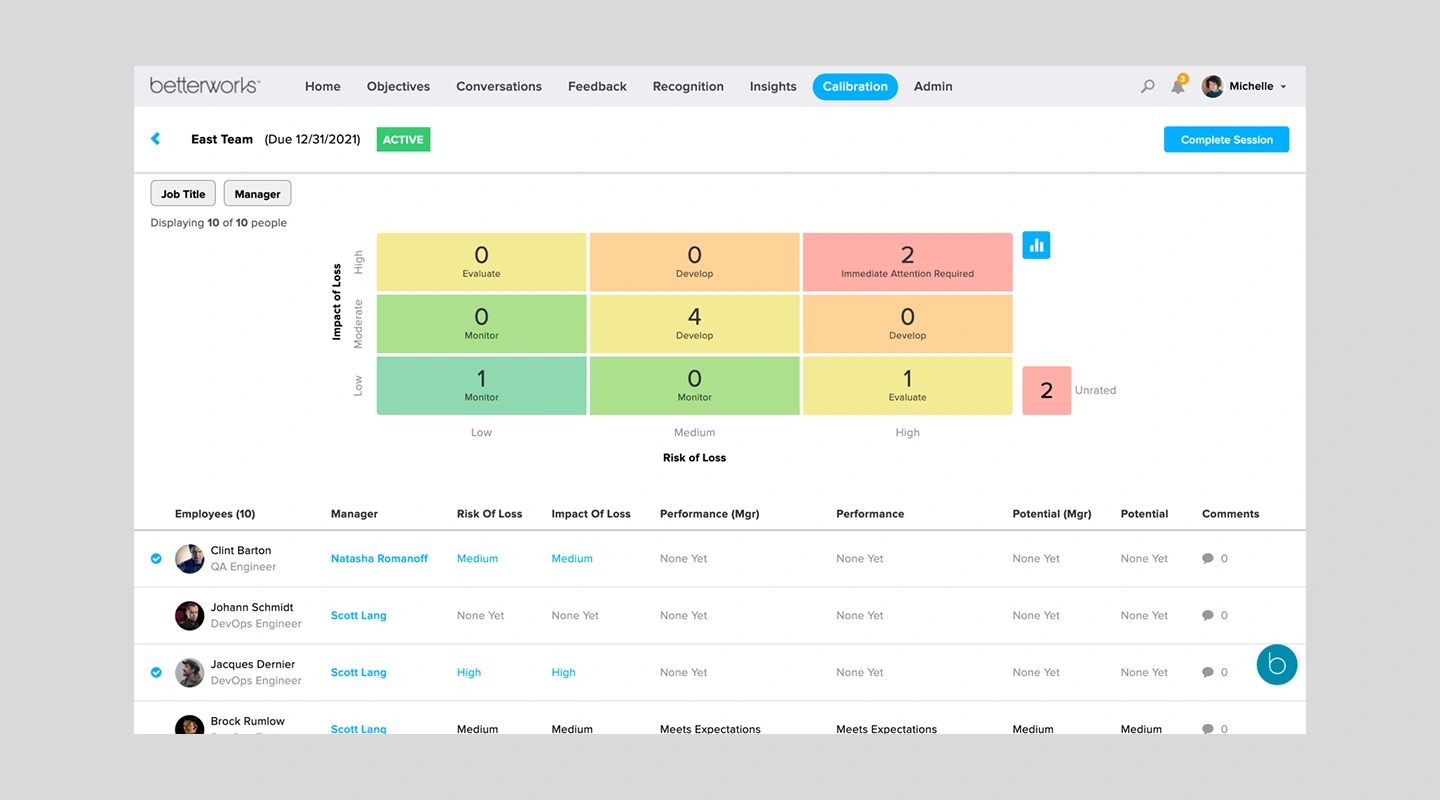
How Betterworks can be used as a Performance Management App:
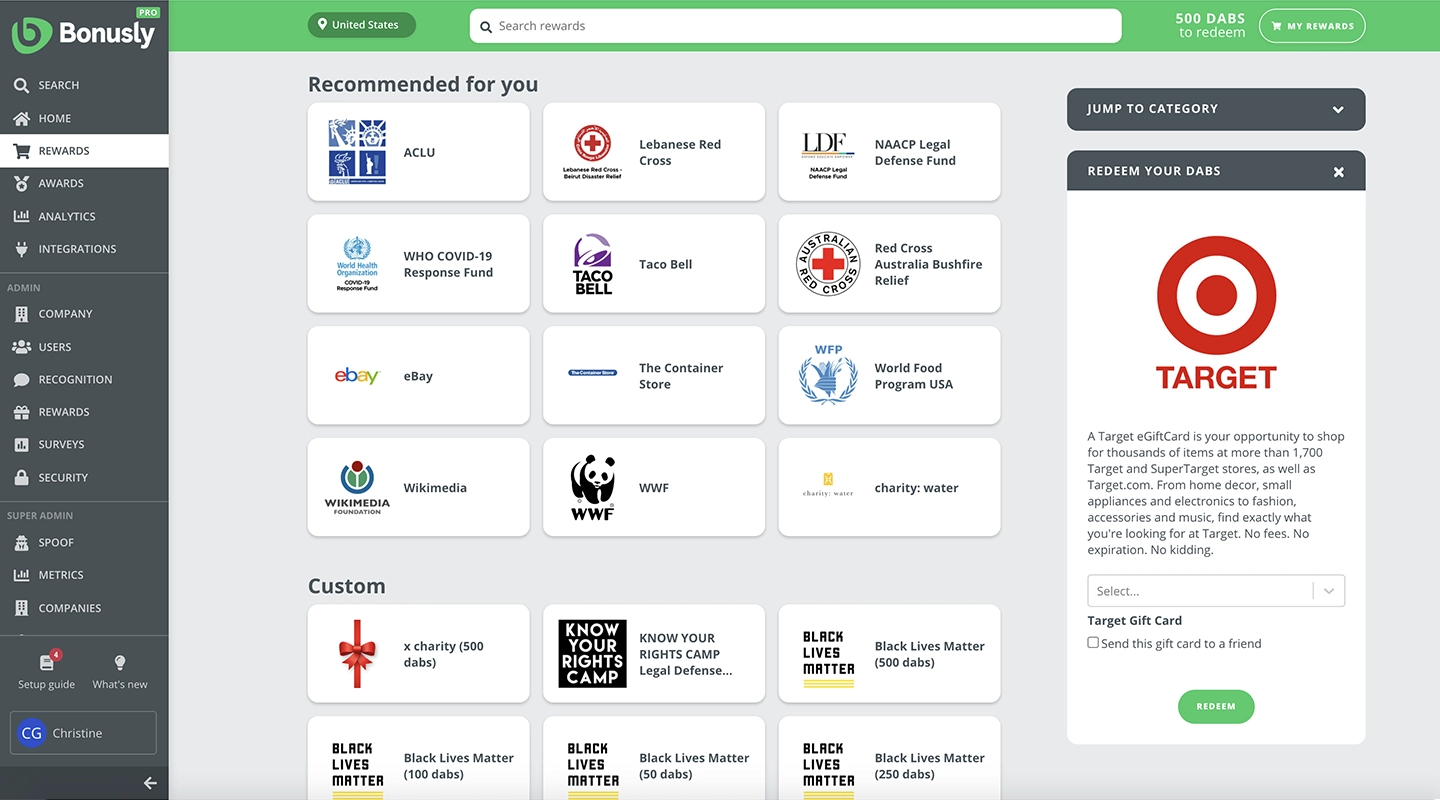
How Bonusly can be used as an Employee Engagement App:
TinyPulse doesn’t offer a free trial which can be risky ypu will not have the chance to evaluate its features, user experience, and effectiveness of the platform before you want to commit
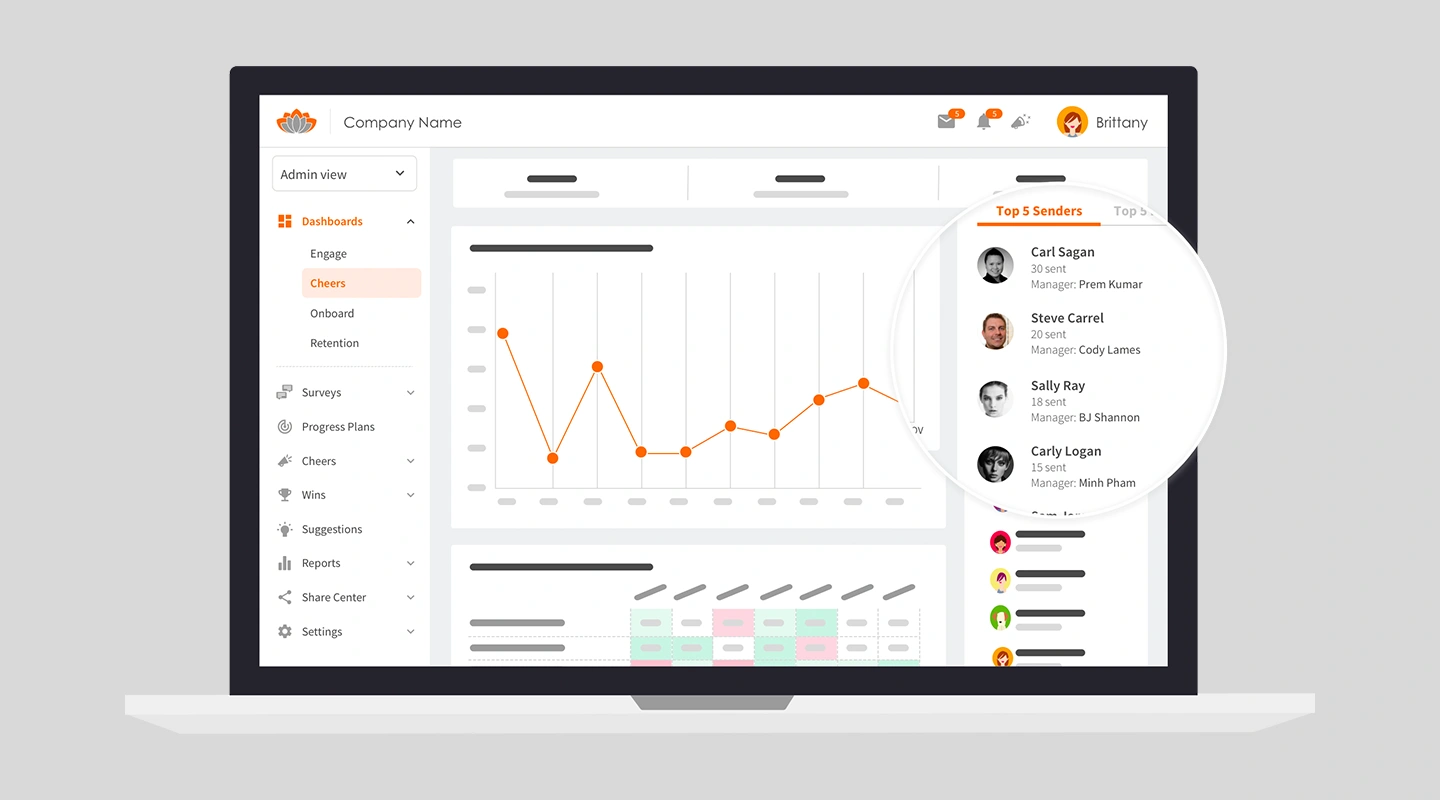
How TinyPulse can be use as an Employee Engagement App:
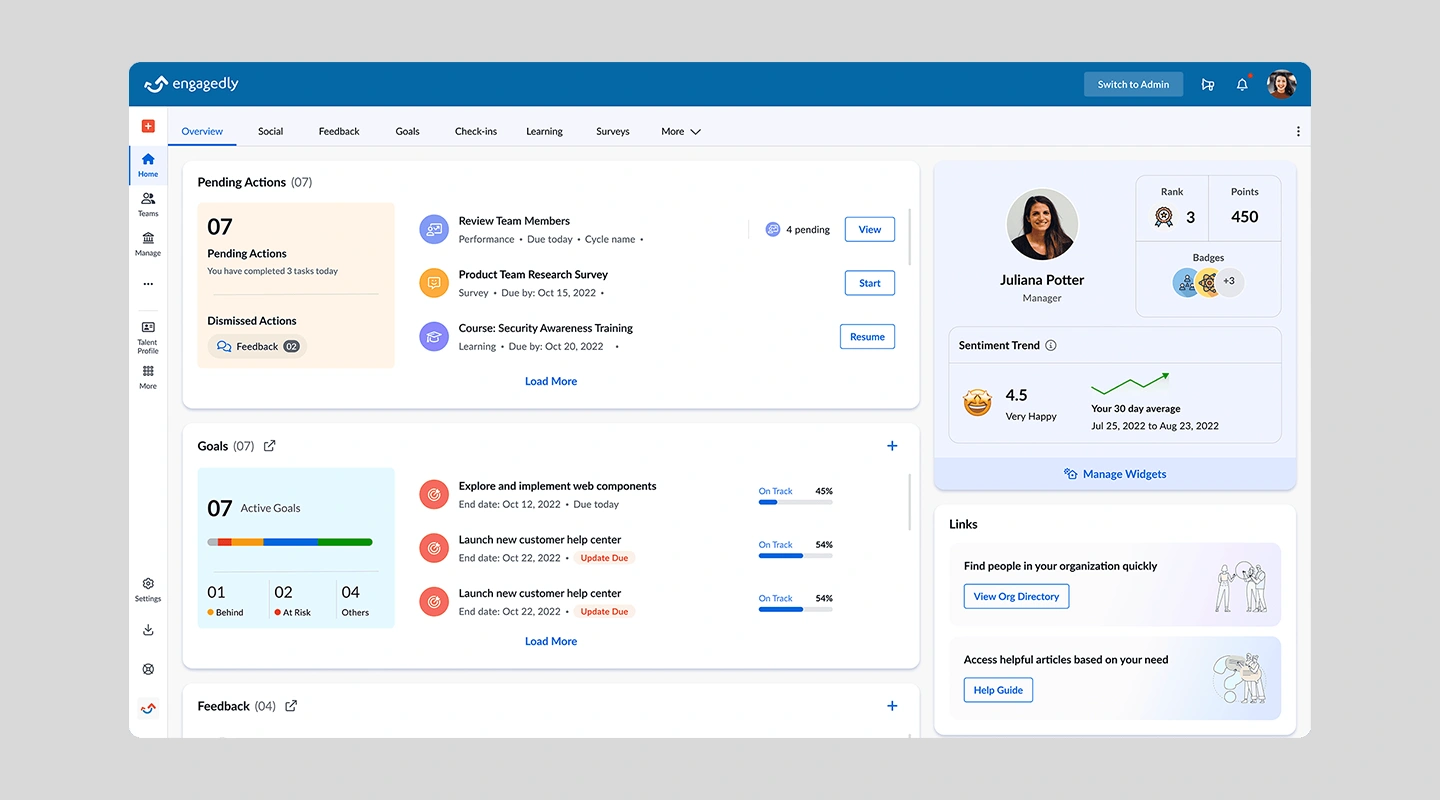
How Engagedly can be used as an Employee Engagement App:
Looking for a game-changing HR solution that’s got your back? Fliplet’s got you covered! In a world filled with HR tools, Fliplet stands out with its comprehensive suite of apps designed for every stage of the employee lifecycle. The best part? Fliplet is a no-code platform which means that Fliplet allows extensive customization to your HR App without any coding.
With a list of 17+ different prebuilt templates, Fliplet helps you extend the functionality of your HR Apps to suit your specific needs. No more functions that aren’t supported or use cases that aren’t covered.
Just dive into Fliplet’s treasure trove of pre-built templates covering Recruitment, Onboarding and Off-boarding, Time and Attendance Management, Performance Management, and Employee Engagement. Pick one, tweak it to your liking, and voilà – you’ve got yourself a powerful, seamless HR solution.
But wait, there’s more! Fliplet integrates like a charm with other HR systems and tools, streamlining your workflow and simplifying employee data management. With Fliplet, you’re choosing a flexible, customizable solution and investing in a platform that boosts efficiency, productivity, and employee engagement across the board.
So, go ahead and give Fliplet a spin. Transform your HR experience and let your team focus on what truly matters – your people.
On top, Fliplet has a large selection of pre-built app solutions that you can fully customize to suit your needs or add to your HR arsenal. These include:
Pricing
Choosing the right HR app for your organization can feel like finding a needle in a haystack. But fear not, there are a few factors you should keep in mind when considering your options:
For small businesses aiming to streamline their HR processes efficiently while keeping an eye on growth and scalability, choosing the right HR app is crucial. The software they choose is a critical decision, and most small businesses don’t have the wiggle room to commit to a platform only to find it doesn’t meet their needs.
That’s why we selected the best human resources app for small businesses.
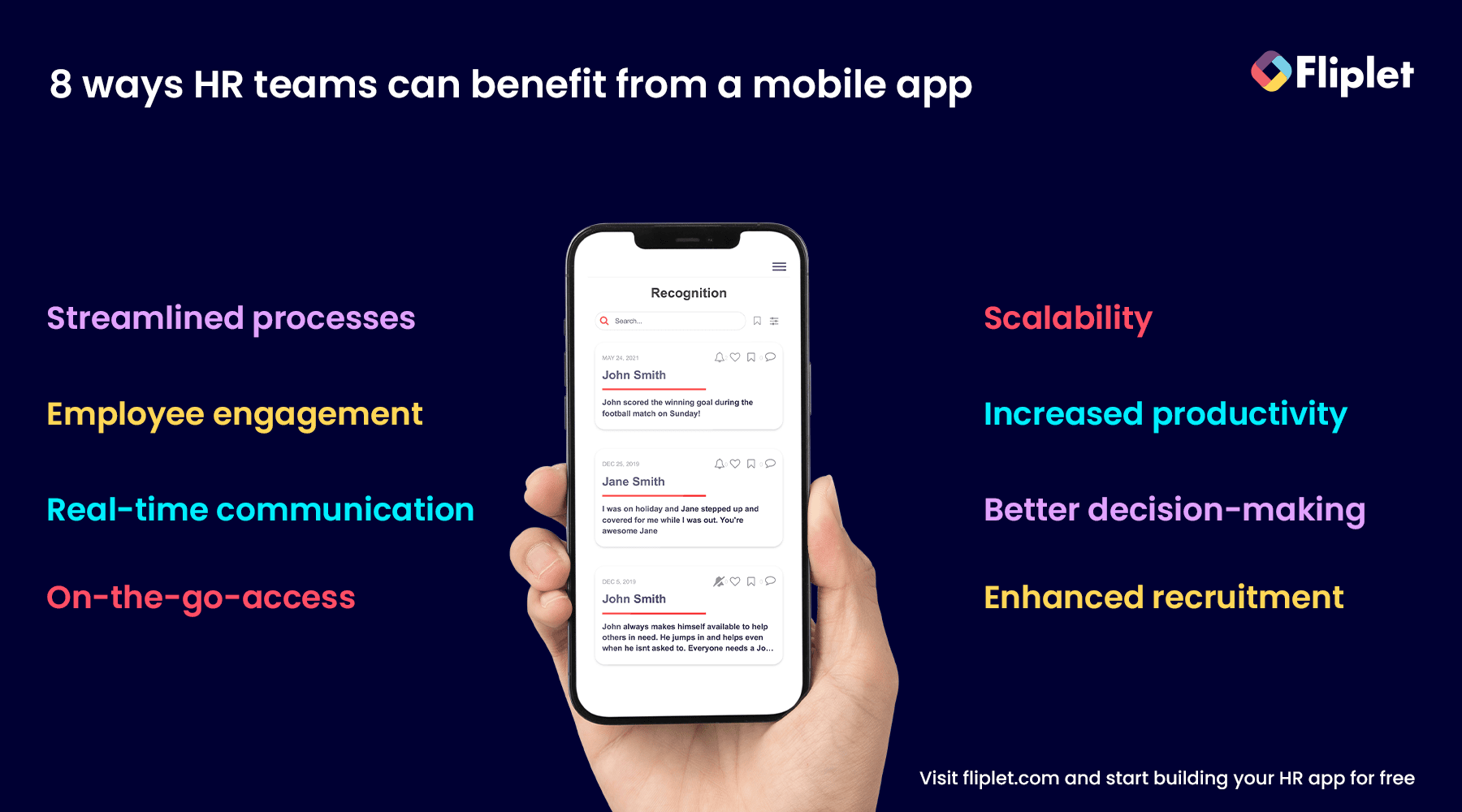
HR apps have brought many benefits to the modern workplace, making it easier for businesses to manage their employees efficiently. Here are some of the key benefits of using HR apps:
Overall, HR apps are an essential tool for any modern business looking to optimize their HR processes and drive employee engagement and productivity.
Every HR team embarks on a unique buyer journey to find the best tools for managing their organization’s human resources.This journey often begins with purchasing off-the-shelf solutions to address specific challenges, such as recruiting or employee engagement. As their needs evolve, HR teams may gravitate toward more comprehensive HR suites, only to discover that these one-size-fits-all solutions fall short in terms of customization and flexibility.
This constant cycle of transitions can lead to lost time, data, and resource which limit HR Teams abilities to work.
Some of the risks are:
However, thanks to innovative platforms like Fliplet, HR teams can now build their own custom HR suite from scratch, tailoring it to their specific needs and requirements, and eliminating the inefficiencies that come with adopting multiple disparate solutions.
When it comes to managing HR processes, organizations have the option to choose between using an HR suite or purchasing off-the-shelf solutions. While both options have advantages and disadvantages, it’s important to carefully consider which would be the best fit for your organization. In this section, we’ll discuss the pros and cons of each approach, and then address the question of what to do if you already have various HR tools in place.
Advantages of HR Suites:
Disadvantages of HR Suites:
Advantages of Individual HR Tools:
Disadvantages of Individual HR Tools:
In light of the pros and cons of HR suites and individual HR solutions, organizations may find themselves searching for a more flexible and customizable alternative. Custom HR apps built with platforms like Fliplet offer a unique approach that combines the best aspects of both options, providing an ideal solution for organizations seeking to optimize their HR processes.
Advantages of Custom HR Apps with Fliplet:
Regardless of an organization’s size or industry, custom HR apps built with Fliplet provide a compelling solution that addresses the limitations of traditional HR suite apps and individual HR tools. By offering tailored solutions, seamless integration, scalability, cost-effectiveness, enhanced user experience, improved data security, and best-in-market features, custom HR apps empower organizations to optimize their HR processes and overcome the challenges associated with conventional approaches.
In the end, it is crucial to carefully assess your organization’s requirements and objectives to make an informed decision about the most suitable HR technology strategy. By understanding the advantages of custom HR apps with Fliplet, you can confidently select the solution that will best support your HR team’s success and foster a more efficient, productive, and engaged workforce.
As the digital landscape continues to evolve, so does the HR world. From AI-powered solutions to the rise of remote work, there are several trends that are shaping the future of HR apps. In this section, we’ll explore four key trends transforming how HR professionals work and the role that HR apps play in this shifting landscape. Read on to discover how these trends influence the development of HR apps and how they can help you streamline your HR processes and improve your organization’s overall performance.
As the demand for HR apps grows, Fliplet remains at the forefront of the latest trends in the industry. With a no-code platform and pre-built app templates, Fliplet empowers HR professionals to create custom apps that cater to their specific needs. Whether you’re looking to streamline your recruitment process or improve employee engagement, Fliplet provides a flexible and scalable solution to meet your HR needs.
In today’s fast-paced world, it’s becoming increasingly important for businesses to adopt mobile solutions that allow their employees to stay connected and productive on-the-go. HR mobile apps are no exception, and in fact, have become a game-changer for HR professionals looking to streamline processes, and to improve employee engagement.
With HR mobile apps, organizations can empower their employees to manage their personal information, request time off, access training resources, and more, all from the convenience of their mobile devices. In this paragraph, we’ll explore the benefits of using HR mobile apps and how they can help organizations achieve their HR goals.
Overall, HR mobile apps offer a range of benefits that can help organizations improve efficiency, productivity, and employee engagement, making them a valuable addition to any HR strategy.
Building a mobile app for your People Teams is not as hard as you might think. Fliplet’s Eversheds Open House case study proves just that. Eversheds Sutherland, a global law firm, combated the issue of maintaining social connections while working from home through their Open House mobile app. The app kept employees socially connected and helped combat the effects of Covid-19 and working from home.
With Fliplet, you, too can create a customized HR mobile app that meets your organization’s specific needs. Fliplet’s no-code platform offers customizable templates, a drag-and-drop interface, cost-effective pricing, and a plethora of advanced features, making it an excellent choice for businesses of any size or industry. Plus, you can try it for free! Improve your People Team’s communication, engagement, and productivity by building an HR mobile app with Fliplet today.
If you’re an HR leader looking to build a mobile app on a budget, there are several factors to consider before selecting a platform.
Step 1: Select a platform
First things first, do some research and select a platform that fits your business needs. We recommend using a no-code platform to save yourself time and money. Look for a platform with a user-friendly interface, customizable templates, and the ability to integrate with other HR systems and tools.
Fliplet is an award-winning app building platform that offers all of these features and more, making it an excellent choice for HR leaders of any size or industry.
Step 2: Choose the plan that fits your app development needs
The second step is to choose the plan that fits your app development needs. Assess the features you want in the app and how much they might cost. Fliplet offers a range of subscription plans tailored to different stages or sizes of businesses, making it easy to select a plan that fits your budget.
Step 3: Decide on a template
The third step is to pick a template that meets your HR team’s requirements. When building an HR mobile app, selecting the right template can save you valuable time and resources. With Fliplet, you have the option to select a pre-built HR solution or start from scratch and build it yourself with no code.
We recommend selecting the HR solution template as it comes with all the key features needed for an HR mobile app, including onboarding/offboarding, time and attendance management, and task management.
Step 4: Brand your app and add your content in
The fourth step is to brand your app and add your content in, customizing it to suit your organization’s needs. Fliplet makes it easy to change colors, logos, fonts, and layouts, allowing you to create something unique that resonates with your employees.
Step 5: Publish
The fifth step is to publish your app on any of the supported publishing channels, such as the web, Apple App Store, or Google Play. Fliplet also allows you to publish mobile, tablet and web apps and distribute apps internally by publishing them as enterprise apps for Android and iOS devices.
Step 6: App analytics
Analytics can play a crucial role in measuring the success and engagement of an HR mobile app. By analyzing user behavior within the app, HR leaders can gain valuable insights into how employees interact with the app, which features are being used the most, and which areas may need improvement.
By following these steps and using a platform like Fliplet, HR leaders can create a budget-friendly, user-friendly mobile app that streamlines HR processes, engages employees, and supports data-driven decision-making.
Do you want to know more about developing a HR mobile app without coding? Check out this blog.
In conclusion, HR apps, and especially HR mobile apps, are becoming more essential than ever in today’s fast-paced business world. They offer improved accessibility, increased efficiency, enhanced communication, and improved engagement, making them valuable additions to any HR strategy. By adopting mobile solutions, organizations can empower their employees to manage their personal information, request time off, access training resources, and more, all from the convenience of their mobile devices.
When it comes to building an HR mobile app, Fliplet offers an excellent solution. With customizable templates, a drag-and-drop interface, cost-effective pricing, and many advanced features, Fliplet makes it easy for organizations to create a mobile app that meets their specific needs. Moreover, Fliplet offers a range of subscription plans tailored to different stages or sizes of businesses, making it easy to select a plan that fits any budget.
Take the first step in building an HR mobile app today by exploring Fliplet’s website and seeing how it can help your organization achieve its HR goals. Try Fliplet today and start building your HR app!
Yes! There are several free HR apps available that can be particularly beneficial for small businesses or startups looking to streamline their HR processes without a significant initial investment. Some of these apps offer basic functionalities such as time tracking, leave management, and simple employee onboarding features at no cost.
Fliplet allows you to make your first app for free — allowing you to really check out the value it could bring your company before making the leap. Examples also include Homebase for scheduling and time tracking, Bitrix24 for basic HR functions, and Zoho People, which offers a free edition for up to five users.
The best mobile HR software will vary depending on your exact needs, but the overall best options include:
The three main HR systems are HRIS (Human Resource Information System), HCM (Human Capital Management), and HRMS (Human Resource Management System). HRIS is primarily used for managing employee data and records, while HCM focuses on the broader aspects of human capital, such as talent acquisition, management, and development. HRMS combines features of both HRIS and HCM and offers a more comprehensive solution for managing HR tasks.
An HRMS (Human Resource Management System) is software designed to manage people, policies, and procedures. It focuses on the core HR tasks, such as employee information management, time and attendance, payroll, and benefits management. It’s essentially a database system for HR activities with functionalities that support your basic HR needs.
An HRIS (Human Resource Information System) has all the features of an HRIS but extends to more strategic HR functions, including talent management, recruitment, employee performance management, and learning management systems (LMS).
So, while an HRIS is focused on administrative HR tasks, an HRMS offers a more comprehensive suite, including strategic HR management. The choice between the two depends on the complexity of your HR operations and the strategic importance of HR in your organization.
Excel is a commonly used tool by HR professionals for tasks such as tracking employee data, creating schedules, and managing budgets. However, while Excel can be useful, it has limitations when it comes to complex HR tasks and can be time-consuming to manage. Using an HR app or mobile app can automate many of these tasks and improve efficiency.
Yes, there are HR databases that can help HR teams manage employee information, such as personal data, job information, and performance records. Some HR software solutions come with built-in databases, while others integrate with third-party HR databases. Fliplet is an app building platform that also allows users to store and manage data securely in the cloud, with advanced security features such as role-based access control and encryption. This can help HR teams maintain and organize employee data in a secure and accessible manner.
Mobile HR refers to the use of mobile technology, such as smartphones and tablets, to manage HR-related tasks and workflows. Mobile HR apps offer a convenient way for employees to access HR-related information and complete tasks on-the-go, improving efficiency and productivity.
There is no one-size-fits-all answer to this question, as the best HR model depends on the specific needs and goals of the organization. However, many modern HR models focus on the employee experience and offer a holistic approach to managing HR tasks and workflows. HR mobile apps can be a valuable addition to any HR model, providing employees with greater accessibility to HR-related information and tasks. Fliplet offers an award-winning app building platform that can help HR teams develop custom HR mobile apps that fit their specific needs and goals.